FIG Commission 2 Professional Education Workshop on the
Trends in Surveying Education and Training
University of East London, 26-27 August 2010
|

Commission 2 on technical tour |
Report by Peter Lakin and Richard Latham UEL
This workshop focused on surveying education and in particular how
educators around the world respond to changes in the survey profession and
keep their courses relevant and stimulating for students. Also explored were
the opportunities that exist to enhance surveying teaching and learning by
sharing approaches and investigating the benefits of a variety of new
technologies. The meeting also saw the hand over of the chair of FIG
commission 2 from Bela Markus (University of West Hungary) to Steven Frank (New Mexico State University).
FIG president, Stig Enemark, gave the opening address and
presented an overview of surveying education in Europe. Most surveying
courses have experienced significant changes in recent years, changes
brought about by survey technology, the use of computers in teaching and
learning and changes to the profession itself. Indeed, one comment that
seemed to dominate these proceedings was that ‘the only thing we can rely on
is that things will change’.
Bela Markus has chaired FIG Commission 2 for four years and as
outgoing chair he gave a presentation on Commission 2 achievements amongst
which have been 10 workshops or conferences held worldwide. The impact of
the changing worlds of both surveying and education were again highlighted
in the presentation. As a key part of this, the growing trend of
professional institutions towards using competencies as part of their
requirements for membership was discussed. However it was clear that the
range of definitions of surveying found worldwide makes international
acceptance of a common system difficult. In terms of changes in education,
the growing emphasis on the provision of e-learning is clear and in January
2010 Commission 2 highlighted this in FIG Report no.46 “Enhancing Surveying
Education through E-learning”.
Gert Steinkellner reported on the work of working group 2.4 -
Education Management and Marketing, including details of the workshop held
in Vienna in 2009. After identifying the ‘big swing’ of the profession from
measurement to management as a challenge, he discussed the role FIG could
take in marketing surveying education. This included looking at how the
profession is recognised, the need for realistic expectations and the need
for co-ordinated global marketing.
The final item for the day was the introduction of the proposed work plan
for Commission 2 for 2011 – 2014 by Steven Frank, chairman elect.
Discussion followed on the strategies suggested for each working group and
how FIG can help with survey education at all levels.
Opening the second day of proceedings, Alojz Kopacik presented
details of Slovakian survey education. The University of Technology in
Bratislava takes about 250 surveying students per year. A new course
structure has been introduced, brought about in part by the Bologna Process,
and in part by the aim of aligning courses with others in Europe, thus
enhancing transferrable skills and job opportunities.
Garfield Young (University of West Indies) currently completing a
PhD at Nottingham, presented some of his research on the structure of land
surveying courses currently on offer worldwide. Amongst a variety of
interesting findings he observed that first year students often have a high
tutor dependence and this needs to be changed to self direction by the final
year and for lifelong learning and CPD. The importance of the field schemes
in preparing students for real life was also highlighted.
Stephen Ramsey from Leica gave the perspective from a
manufacturer’s view. Laser Scanners are changing the way we survey, but
errors are still not considered fully by users. Not enough training is
provided, so users depend on the equipment and the software and often lack
an understanding of how to combine data sets, extract 3D surfaces and can’t
understand what happens when things go wrong.
Henny Mills from Newcastle University and Peter Lakin from
the University of East London ran through some of the alternatives to
traditional teaching methods they have been trying in their respective
courses. Henny’s examples included the interactive traverse learning tool,
which enables students to calculate a traverse by hand, then insert values
into an e-learning tool for checking, as well as levelling and digital data
flow on-line tutorials. Peter demonstrated examples of learning support
using one-minute video clips combined with the use of mobile video players
in the field to help guide students through the use of total stations. He
also explained some sample exercises currently undertaken by surveying
students making use of problem based learning approaches.
Gert Steinkellner followed, with a second presentation,
concentrating on survey education in Austria. He outlined recent changes
brought about as a result of the Bologna process, especially with new public
management, autonomy of universities and modern teaching and learning.
Tim Goodhead (Portsmouth University) introduced the new Associate
membership route of the Royal Institution of Chartered Surveyors in the UK
and the use of competencies in the membership process. He also outlined the
origins of the RICS and changes it has faced and adapted to.
The final paper was from the furthest travelled delegate – Michael
Strack (Otago University, New Zealand. Here, the main course is a BSurv,
co-ordinated with the New Zealand Institute of Surveyors professional
requirements. The content is based on the requirements of the New Zealand
cadastral system but with alternatives for management and development
becoming popular choices. There is still a high demand for their successful
course as it is seen to have very good employment opportunities (several
working on the Olympic site in London!).
The final discussion session came up with suggestions about how the
profession might benefit from more student exchange programmes and the
potential value of an International summer school. The meeting closed with a
discussion on the possible timing and themes of Commission 2 workshops for
the next four years and ways in which to maximise their potential.
Picture Gallery
Presentations
|
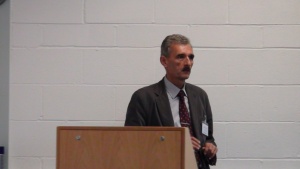
Alojz Kopacik |
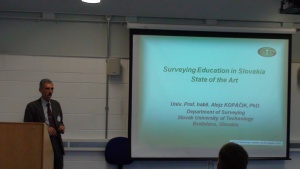
Alojz Kopacik |
|
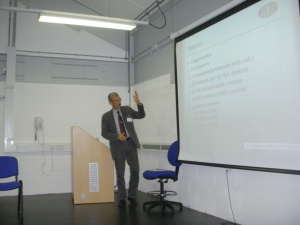
Alojz Kopacik |
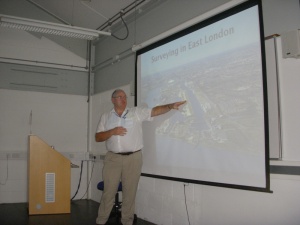
Brian Whiting |
|
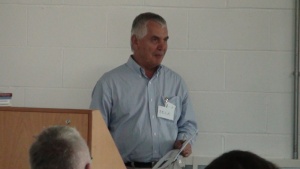
Bela Markus |

Bela Markus |
|
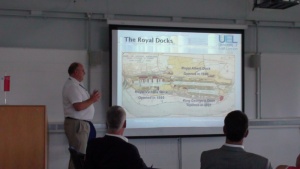
Brian Whiting |
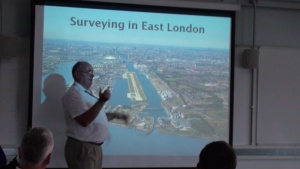
Brian Whiting |
|
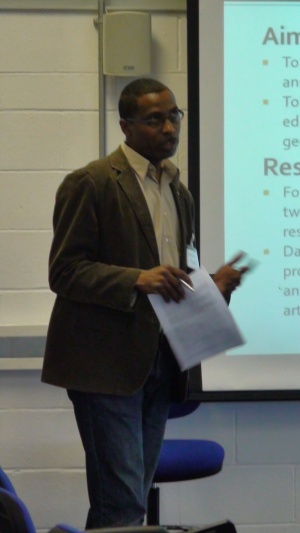
Garfield Young |
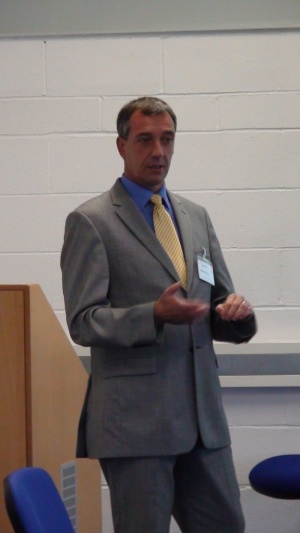
Gert Steinkeliner |
|
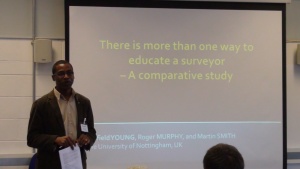
Garfield Young |
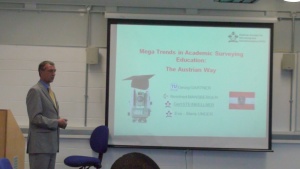
Gert Steinkeliner |
|
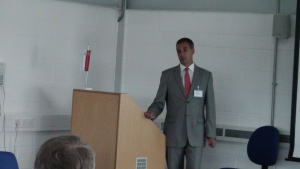
Gert Steinkeliner |
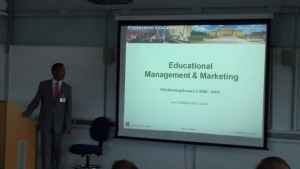
Gert Steinkeliner |
|
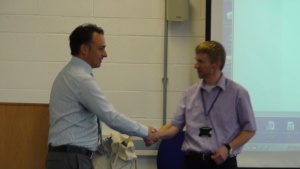
Graham Sharp |
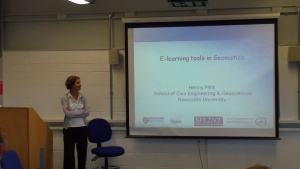
Henny Mills |
|

Henny Mills |
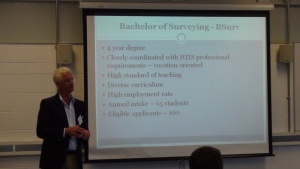
Michael Strack |
|
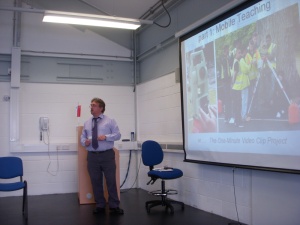
Peter Lakin |
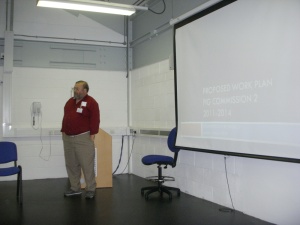
Steve Frank |
|
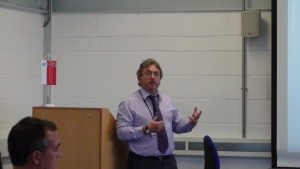
Peter Lakin |
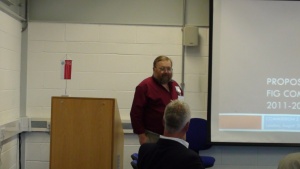
Steve Frank |
|

Steve Frank |
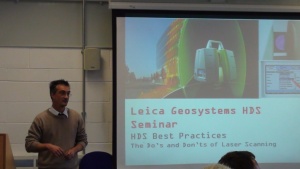
Tim Badley |
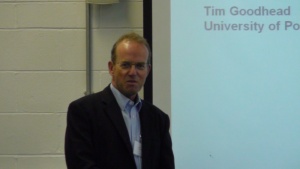
Tim Goodhead |
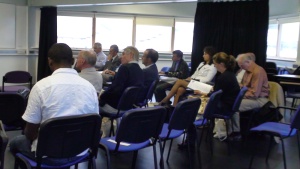
Delegates at the meeting |
|
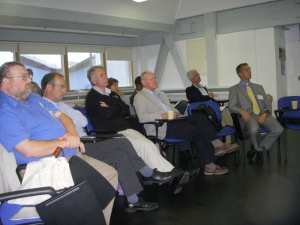
Delegates at the meeting |
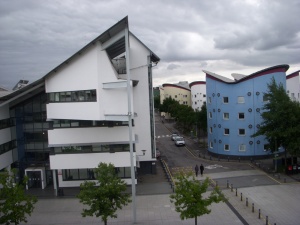
UEL Campus |
| Dinner at the Commission 2 meeting |
|
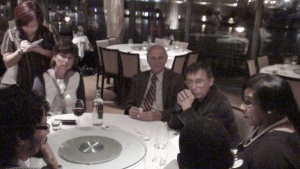 |
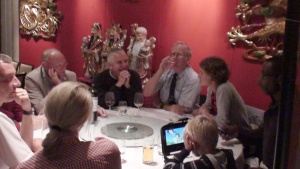 |
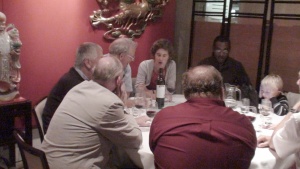 |
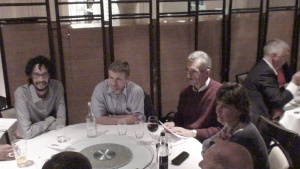 |
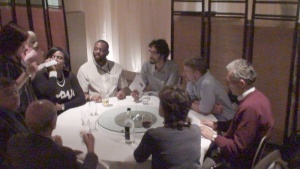 |
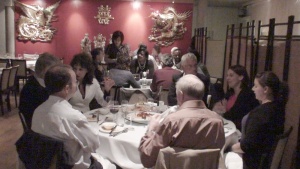 |
16 September 2010
|

























































